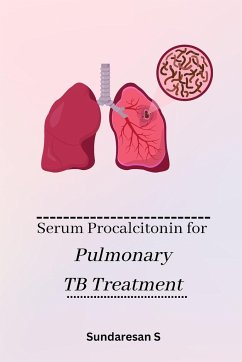Tuberculosis (TB) is an infectious disease caused by the bacterium Mycobacterium tuberculosis. It primarily affects the lungs but can also affect other parts of the body. The disease spreads through the air when an infected person coughs or sneezes, and it is a major global health concern, especially in low-income countries. The diagnosis of TB is currently based on clinical symptoms, radiological findings, and laboratory tests such as sputum smear microscopy and culture. However, these tests are not always accurate, and the diagnosis can be challenging, particularly in areas with limited resources. Additionally, it is challenging to monitor the treatment response and to identify patients who are at risk of relapse. Procalcitonin (PCT) is a biomarker that has been extensively studied in the context of bacterial infections, including respiratory infections. PCT is a precursor of the hormone calcitonin, and its production is upregulated in response to bacterial infections. Several studies have investigated the use of PCT as a biomarker for TB, both in diagnosis and in monitoring the treatment response. One study evaluated the use of PCT as a diagnostic tool for TB in patients with suspected TB. The study found that PCT levels were significantly higher in patients with TB compared to those without TB. The sensitivity and specificity of PCT were 73% and 75%, respectively, which is comparable to other diagnostic tests for TB. Another study evaluated the use of PCT for monitoring the treatment response in patients with TB. The study found that PCT levels decreased significantly after four weeks of treatment and continued to decrease throughout the treatment course. Patients who had a slow decline in PCT levels had a higher risk of treatment failure or relapse, suggesting that PCT can be used to identify patients who may require closer monitoring or a longer treatment course. In addition to diagnosis and monitoring the treatment response, PCT has also been investigated as a tool for predicting the risk of developing TB. A study in household contacts of patients with TB found that PCT levels were significantly higher in those who developed TB compared to those who did not. This suggests that PCT may be useful in identifying individuals who are at higher risk of developing TB and who may benefit from preventive therapy. In conclusion, serum procalcitonin has shown promising results as a biomarker for pulmonary TB treatment. It has the potential to aid in the diagnosis, monitoring of treatment response, and prediction of the risk of developing TB. However, further studies are needed to validate its clinical utility and to determine the optimal cutoff values for different applications.








